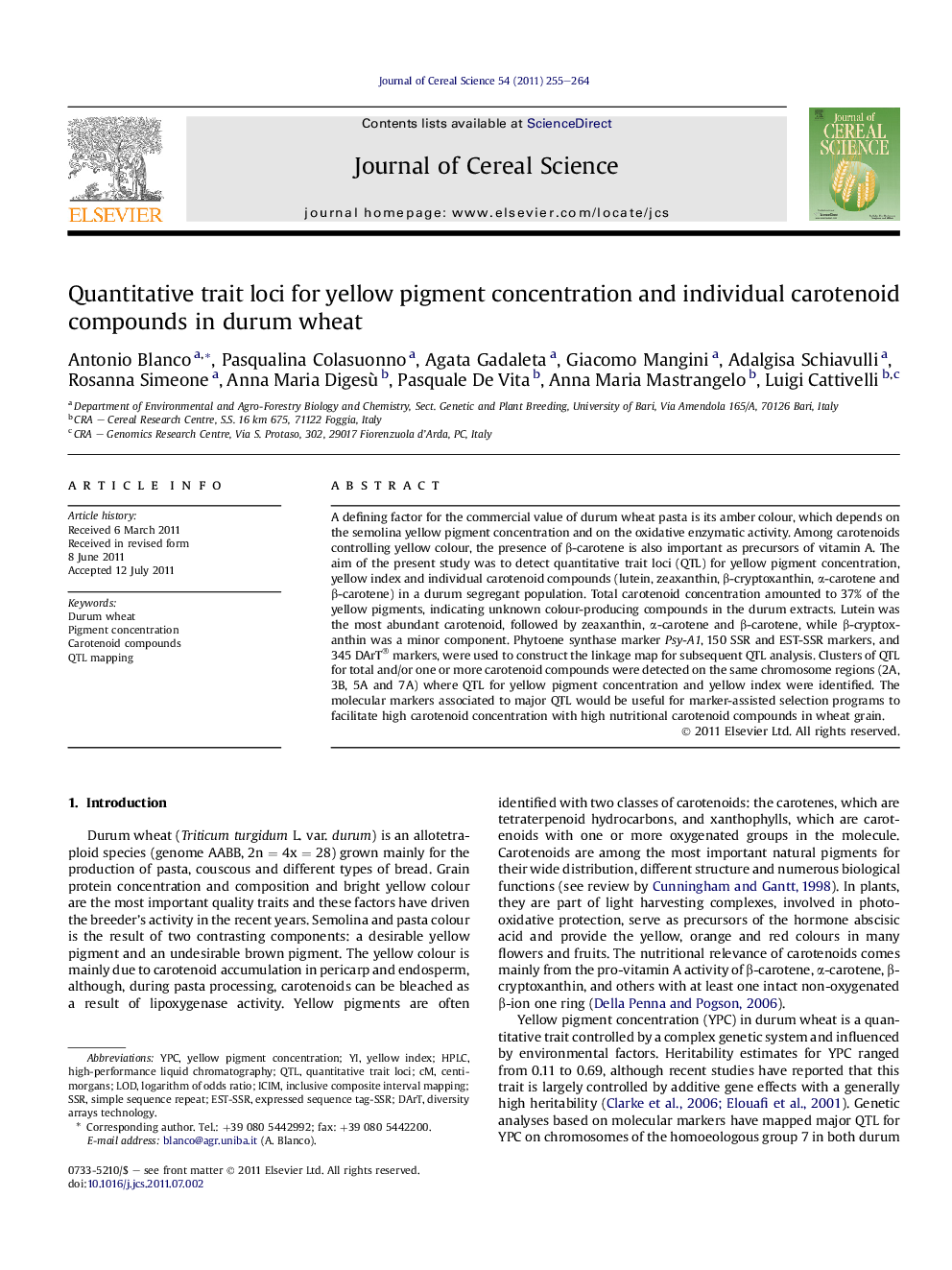| Article ID | Journal | Published Year | Pages | File Type |
|---|---|---|---|---|
| 4516113 | Journal of Cereal Science | 2011 | 10 Pages |
A defining factor for the commercial value of durum wheat pasta is its amber colour, which depends on the semolina yellow pigment concentration and on the oxidative enzymatic activity. Among carotenoids controlling yellow colour, the presence of β-carotene is also important as precursors of vitamin A. The aim of the present study was to detect quantitative trait loci (QTL) for yellow pigment concentration, yellow index and individual carotenoid compounds (lutein, zeaxanthin, β-cryptoxanthin, α-carotene and β-carotene) in a durum segregant population. Total carotenoid concentration amounted to 37% of the yellow pigments, indicating unknown colour-producing compounds in the durum extracts. Lutein was the most abundant carotenoid, followed by zeaxanthin, α-carotene and β-carotene, while β-cryptoxanthin was a minor component. Phytoene synthase marker Psy-A1, 150 SSR and EST-SSR markers, and 345 DArT® markers, were used to construct the linkage map for subsequent QTL analysis. Clusters of QTL for total and/or one or more carotenoid compounds were detected on the same chromosome regions (2A, 3B, 5A and 7A) where QTL for yellow pigment concentration and yellow index were identified. The molecular markers associated to major QTL would be useful for marker-assisted selection programs to facilitate high carotenoid concentration with high nutritional carotenoid compounds in wheat grain.
► A defining factor for the commercial value of durum wheat pasta is its amber colour. ► The detection of QTL for yellow pigment concentration, yellow index has been conducted. ► Phytoene synthase marker Psy-A1, SSR, EST-SSR markers, and DArT® markers were used.
